needle-in-a-needlestack
GPT-4o’s Memory Breakthrough! (NIAN code)
by Tom Burns
Needle in a Needlestack is a new benchmark to measure how well LLMs pay attention to the information in their context window. NIAN creates a prompt that includes thousands of limericks and the prompt asks a question about one limerick at a specific location. Here is an example prompt that includes 2500ish limericks. Until today, no LLM was very good at this benchmark. Here are GPT-4 Turbo and Claude-3 Sonnet’s attempts at this benchmark:
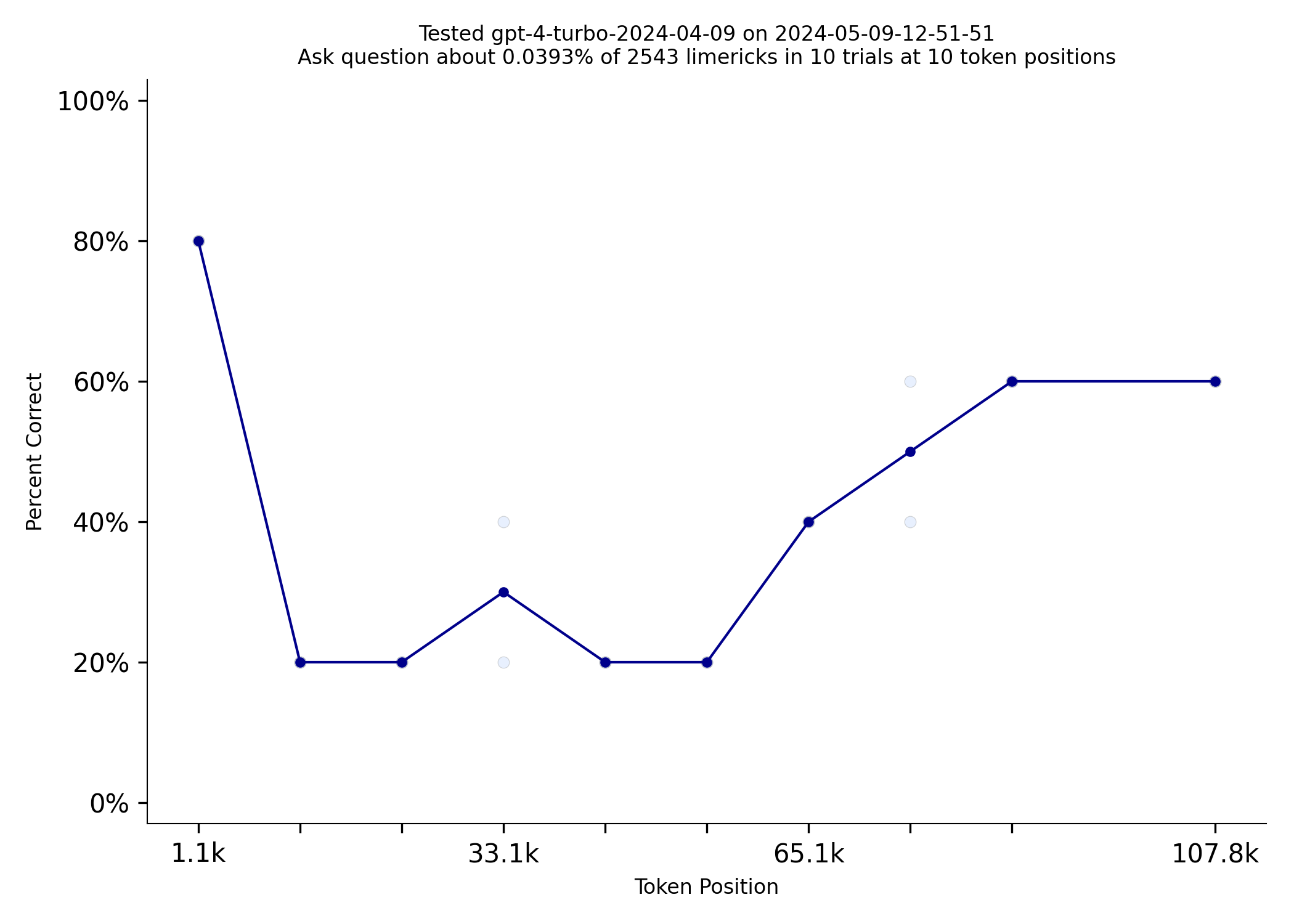 |
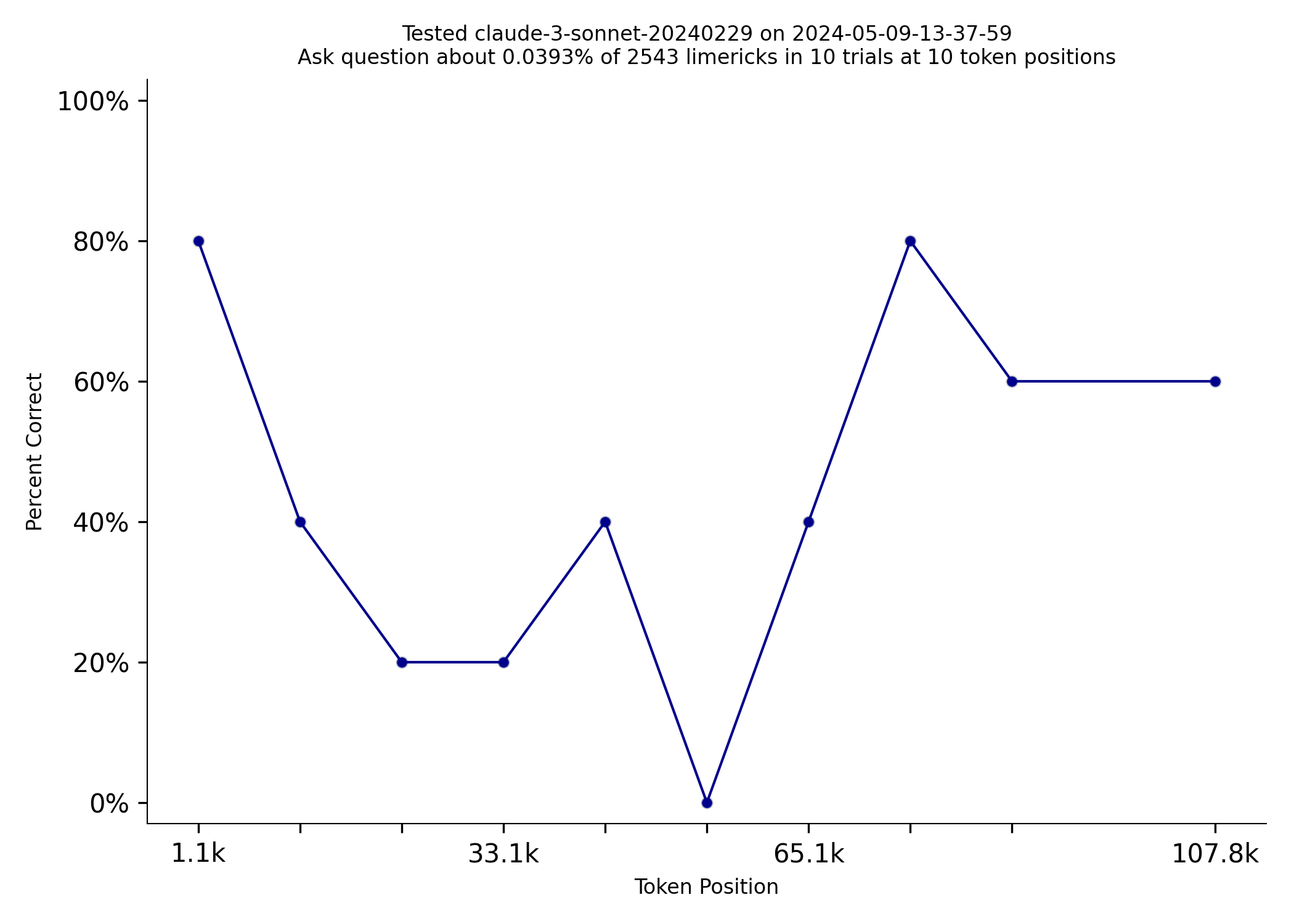 |
|---|---|
| gpt-4-turbo-2024-04-09 | claude-3-sonnet |
However, GPT-4o has made a breakthrough! Check out how well it does on this benchmark:
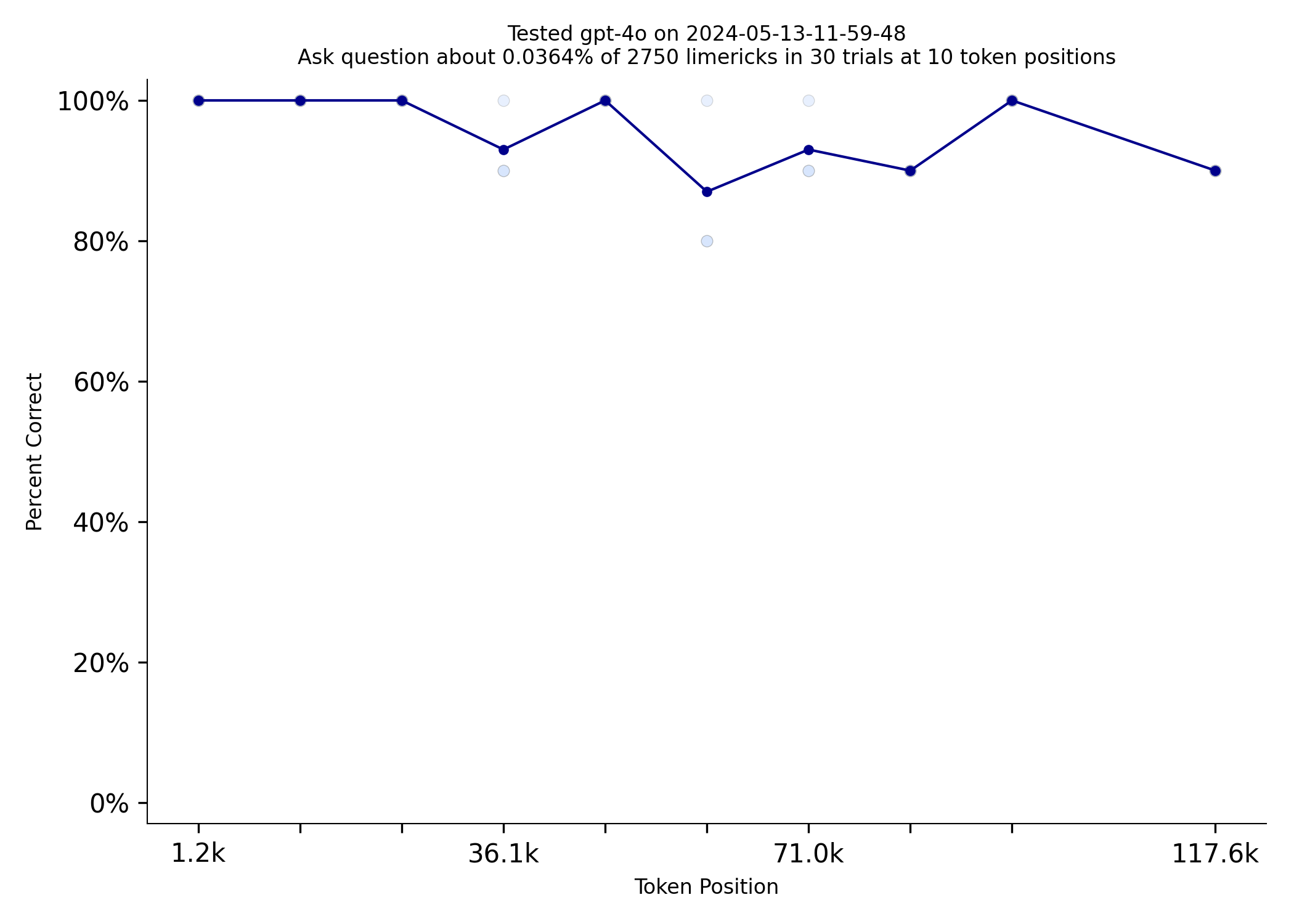
Wow! GPT-4o is almost perfect
I wonder when OpenAI will reveal what they did to make GPT-4o so much better than GPT-4 Turbo?
Mistral’s models are really nice to work with. Their API is very fast and consistent.
However, Mistral’s new 8x22 model had a really hard time with this benchmark. Even at the beginning of the prompt it could only
answer the question correctly 50% of the time. Mistral large did better, but still only got up to 70% correct. Note: I used OpenAI’s tokenizer to estimate token counts. Mistral uses a different tokenizer that generates about 25% more
tokens, so the token counts in the graphs are lower than the actual token counts.
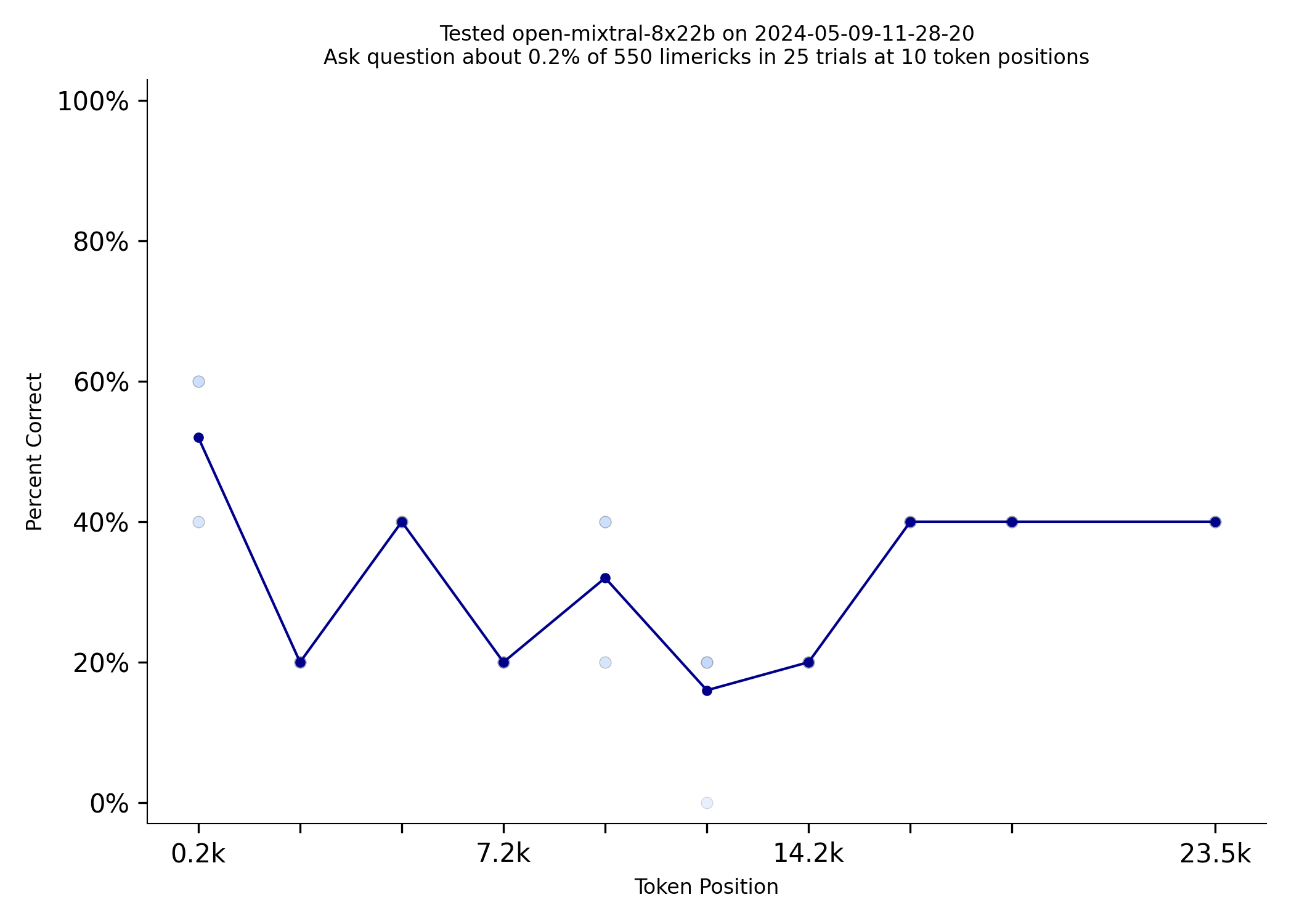 |
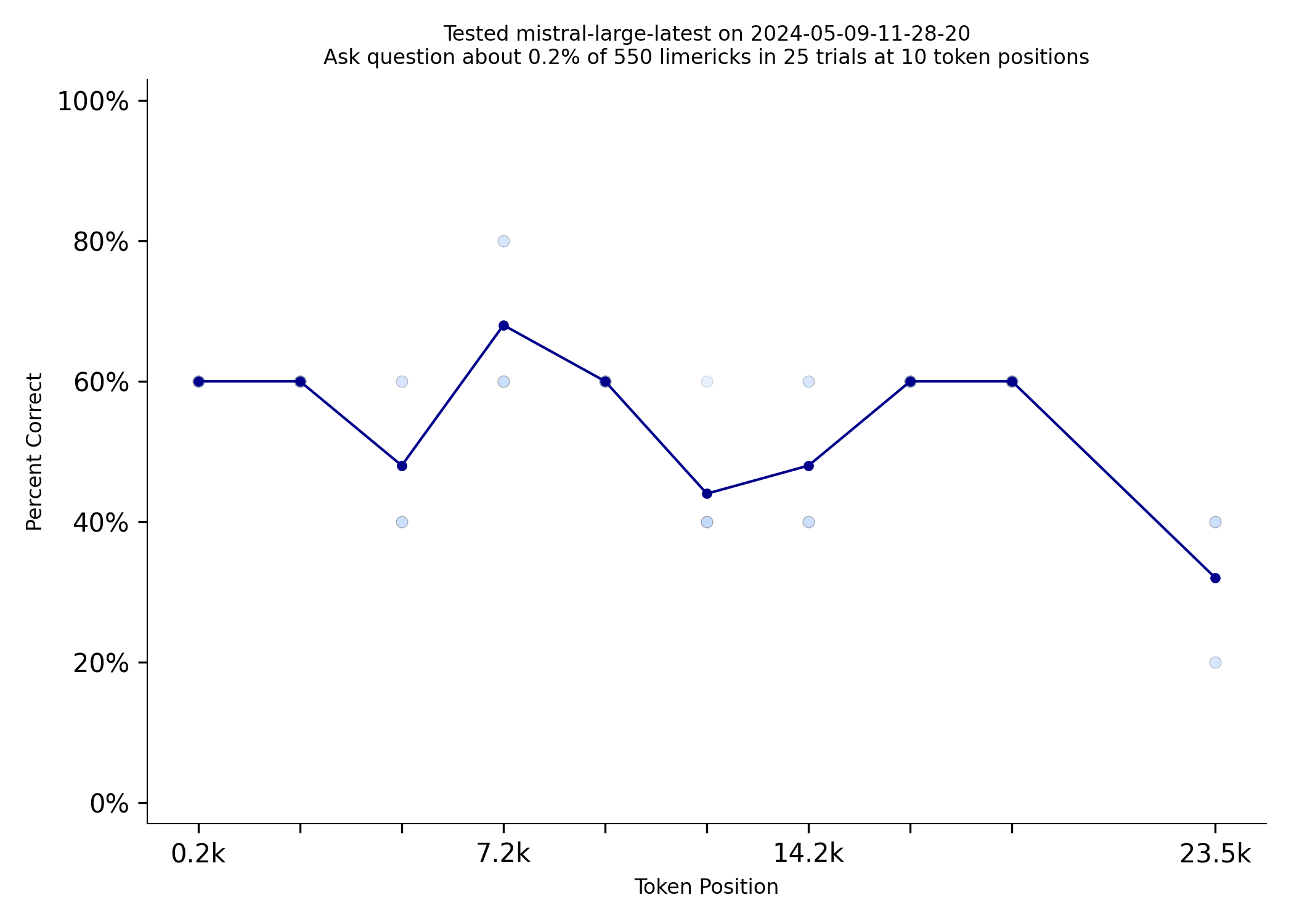 |
|---|---|
| open-mixtral-8x22b | mistral-large-latest-2024-04-09 |
Models do quite a bit better with shorter prompts. Here is Mistral 7b with a 16k-ish token prompt, vs 32k-ish
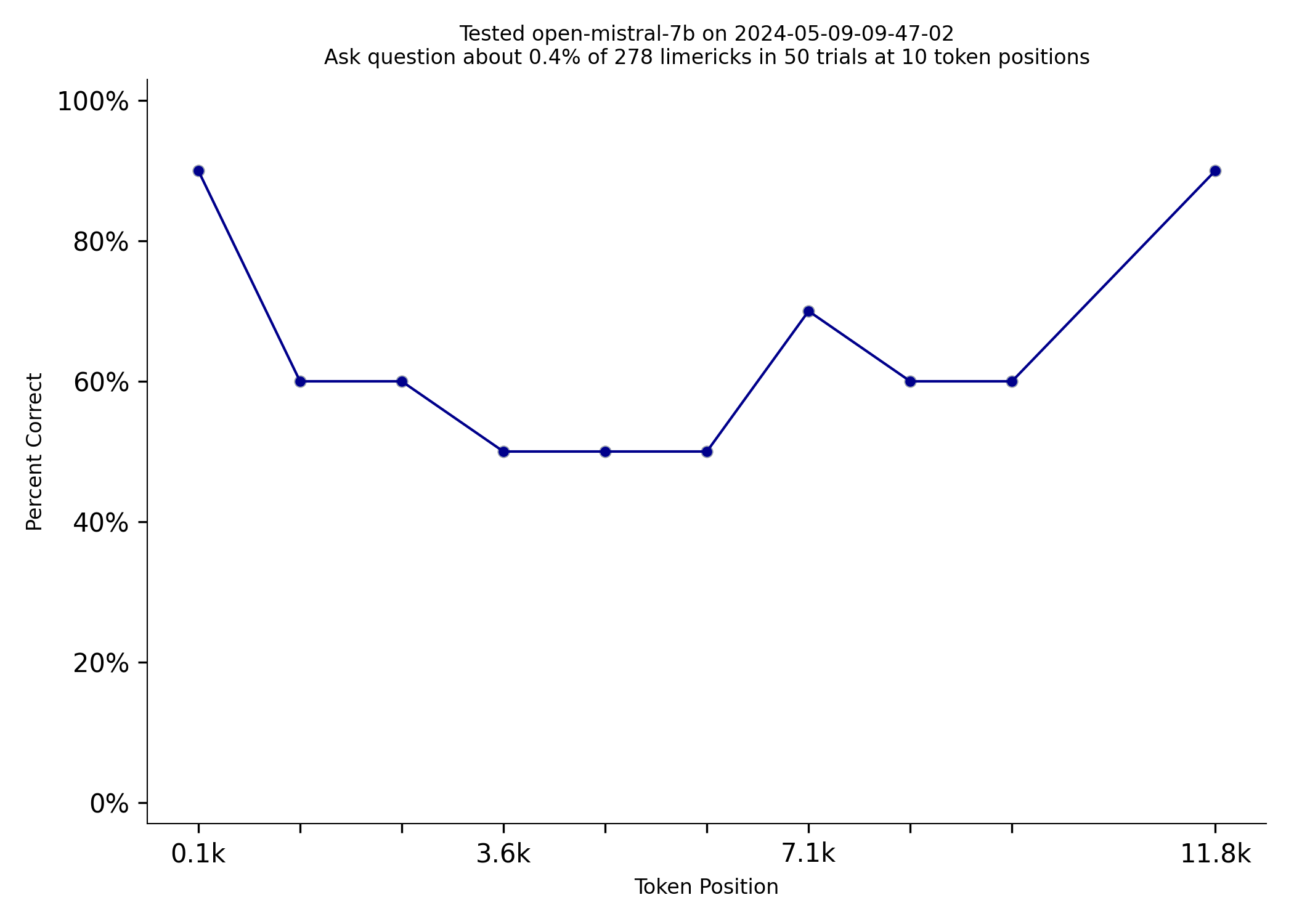 |
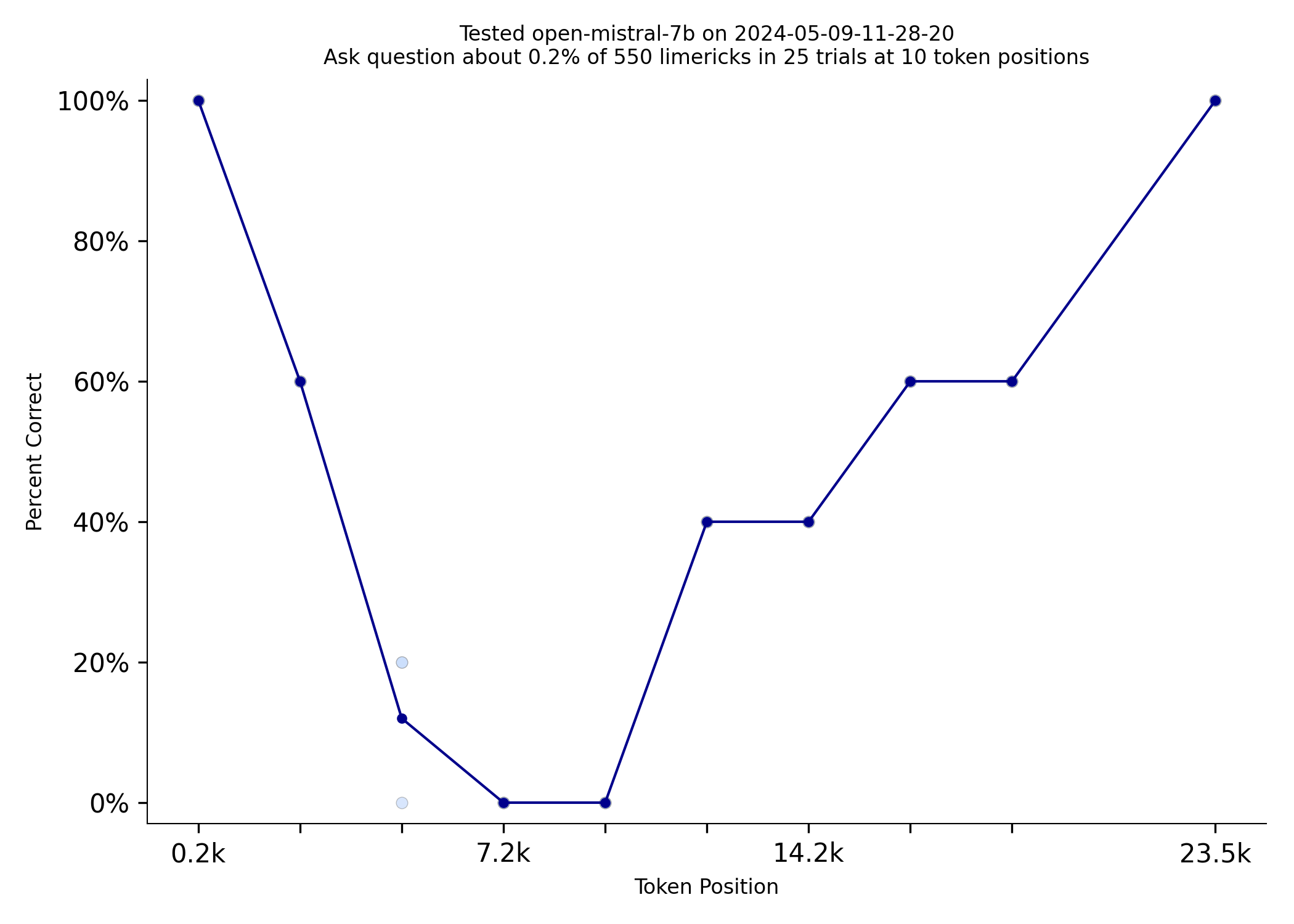 |
|---|---|
| open-mistral-7b 16k tokens | open-mistral-7b 32k tokens |
Repeating information can make a very big difference on this test. GPT-3.5-turbo does dramatically better when the
limerick the prompt asks about is repeated 10 times.
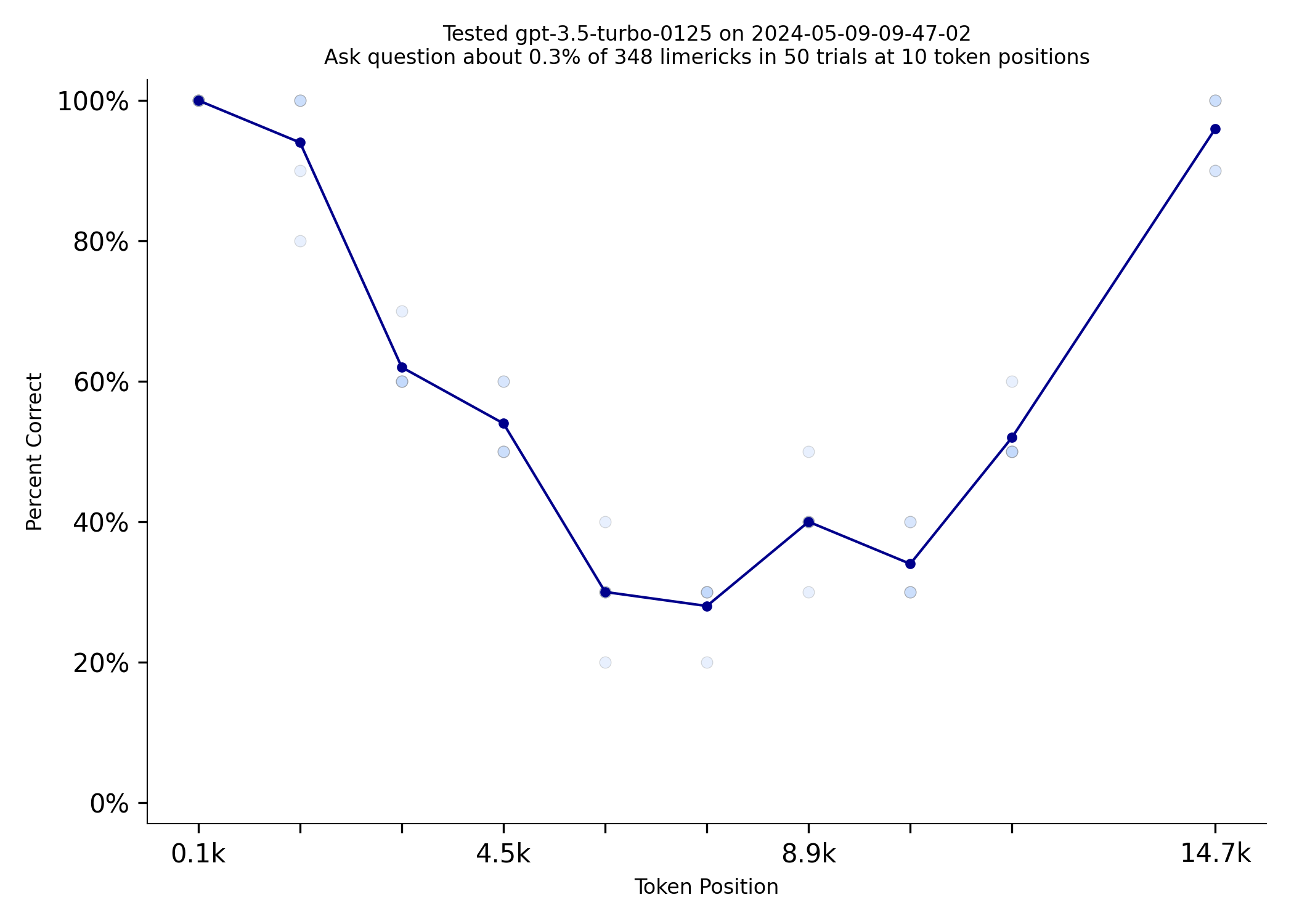 |
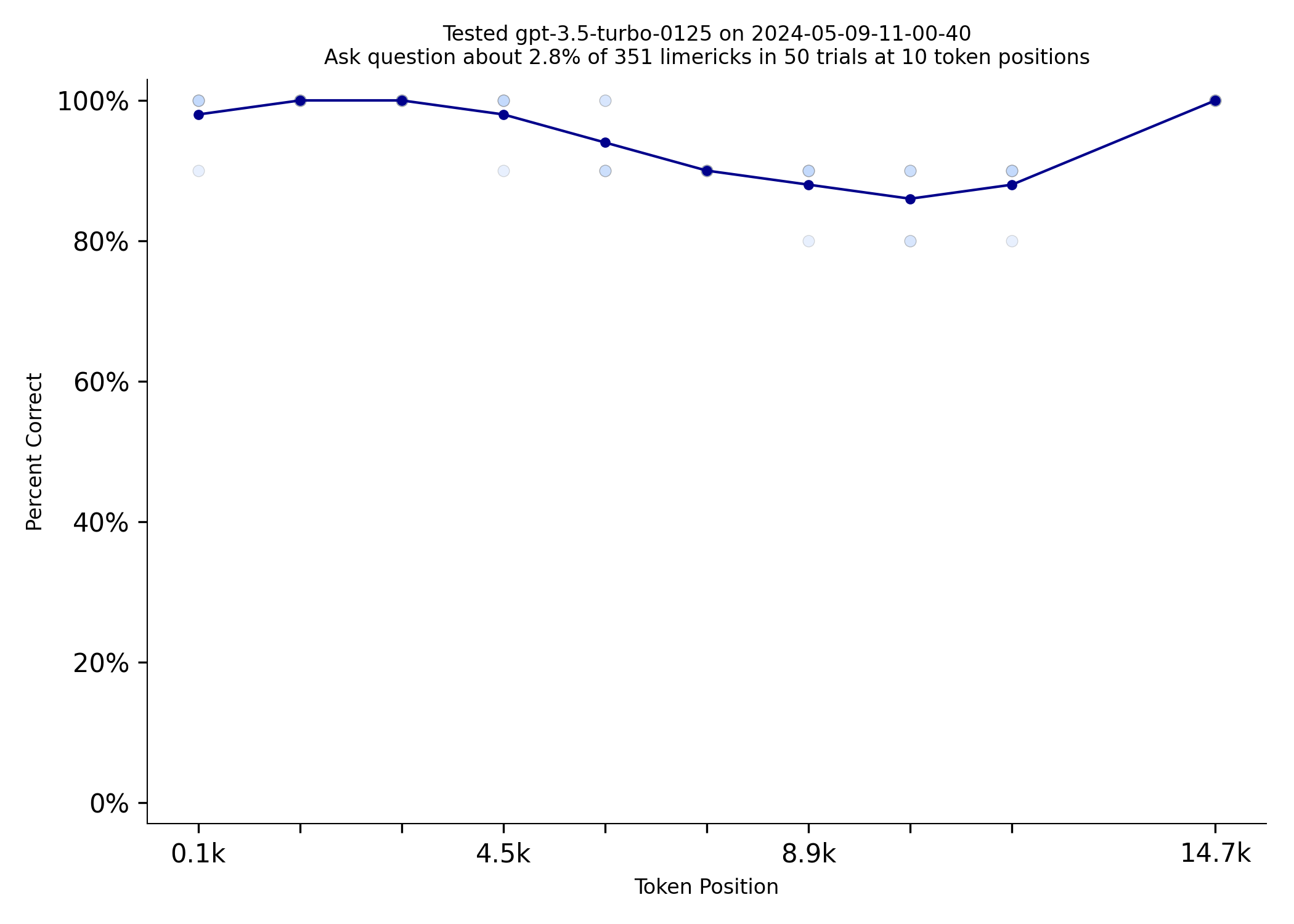 |
|---|---|
| limerick used once | limerick used 10 times |
The code for this benchmark is here. It should be
easy to add support for additional models. You can read more about how answers are evaluated and questions are
vetted on the methodology page. If you have any questions, please contact me